Various creatures of Magirigon have been tamed/domesticated by Celesoars for generations. Such pets and mounts are listed below with context of their general behaviors, patterns, colors, and sizes. These pets and mounts can be purchased in the Pet Market.
![]()
Pets
Pets are usually smaller than Celesoars and generally are used for companionship or for smaller, refined tasks based on the strengths and weaknesses of the pet itself.
| Size: 2-4 ft Tall Females / 2.5-5ft Tall Males Weight: 50-85lbs Lifespan: 25-50yrs Region: Grasslands/Rocky Desert/Mountains/Savannah/Forests Diet: Omnivorous Colors: Gailasaurs can be any color and pattern that an average Chicken can have. Males will ALWAYS have multi-colored crowns and females have single colored crowns.  |  |
Behaviors and TrainingGailasaurs are medium sized bird-like creatures that have long been domesticated by Celesoars. They are a very common source for food, either through collection of unfertilized eggs or from the creatures themselves. They have the intelligence of a young Celesoar and have a love of colorful and shiny things.Gailasaurs are used for pest control for Celesoar farms and are great for keeping farm soil fertilized. They tend to roam in large groups with usually only 1-2 Males in the flock. Having too many Males will lead to fighting and potential death of another male Gailasuar. If kept as pets Gailasuars will get extremely attached to their owners and will follow them everywhere. | 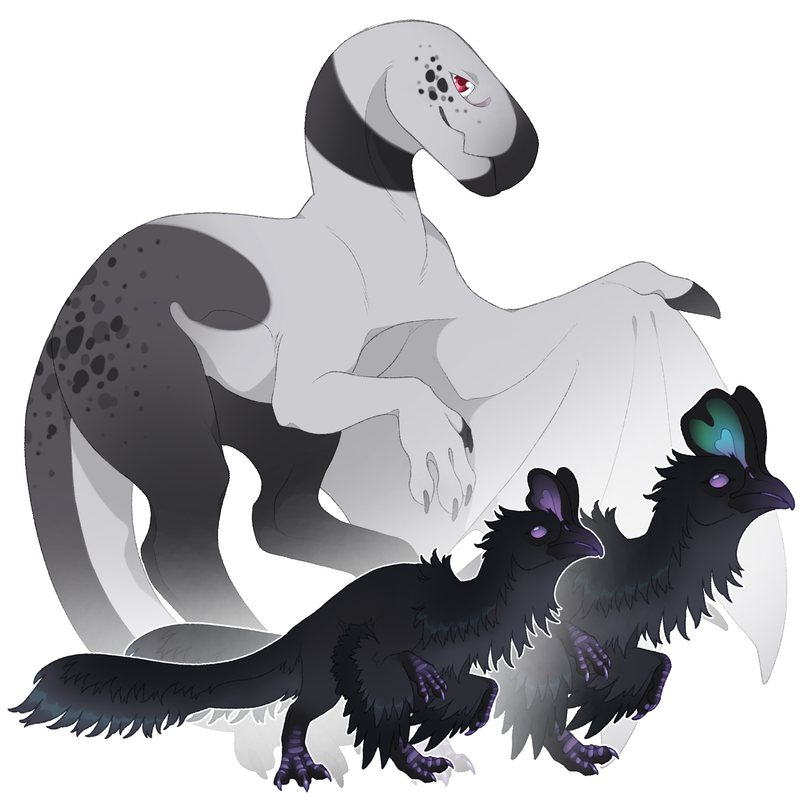 |
Feathered Terrator
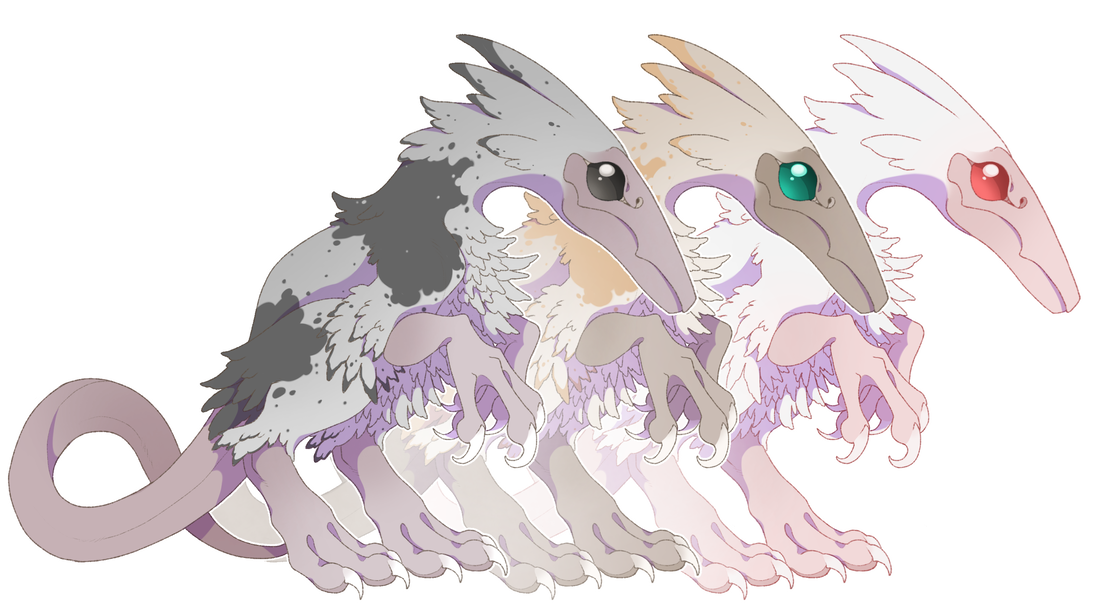 | Size: 1.5-3 ft Tall Weight: 30-60lbs Lifespan: 10-15yrs Region: Grasslands/Rocky Desert/Mountains/Savannah/Swamp/Forests Diet: Carnivorous Colors: Terrators can be any color and pattern that an average rat or mouse can have.  |
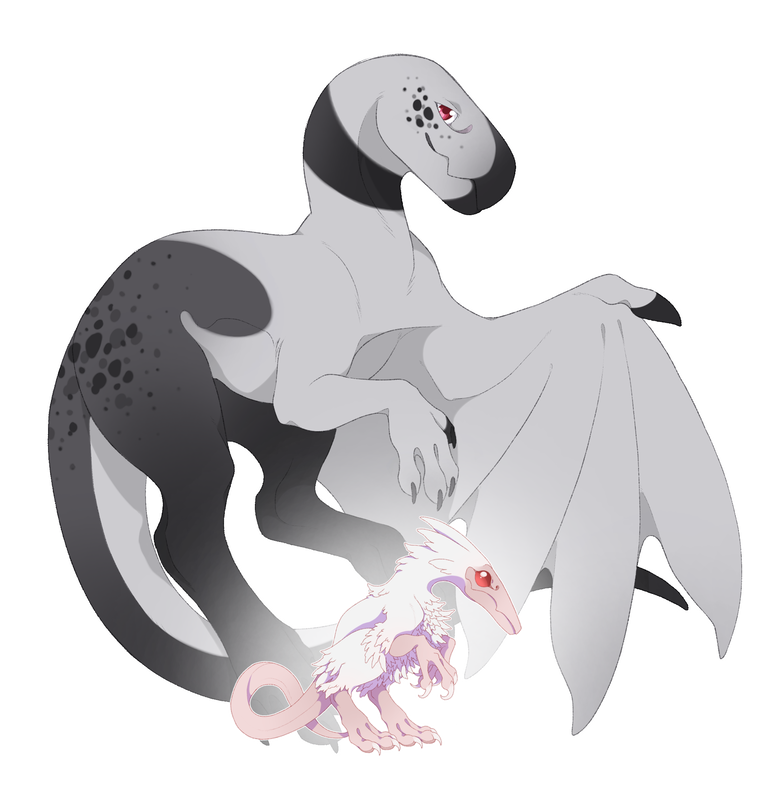 | Behaviors and TrainingTerrators are known to be quite smart and tend to be quite mischievous and are often seen as pests or trouble makers. Terrators can be trained though, given time and the Celesoar having alot of patience. They are often trained for tracking for burrow hunting of small pests/prey or can be used for fetching small items. This often gets used by unsavory Celesoars or Convergence Species to be used in stealing; as such Terrators have a pretty bad reputation within the larger cities and towns. Terrators tend to live in large family units and are relatively easy to breed, making them easily accessible to anyone wanting one as a pet. They are very affectionate and often will groom each other as a sign of affection and for bond building. Should a Celesoar ever have their Terrator groom them, it is a sure sign that they trust them and see them as part of their pack. |
Versantim Wasp Queen
| Size: ~1ft Long Weight: 1-4lbs Lifespan: 5-10yrs Region: Forests/Mountains/Swamps Diet: Omnivorous Colors: Versantims are always a single set of colors with a slight color highlight/hue shift being upon the wings and with a muted greyish color where their less armored parts of their body show.  | 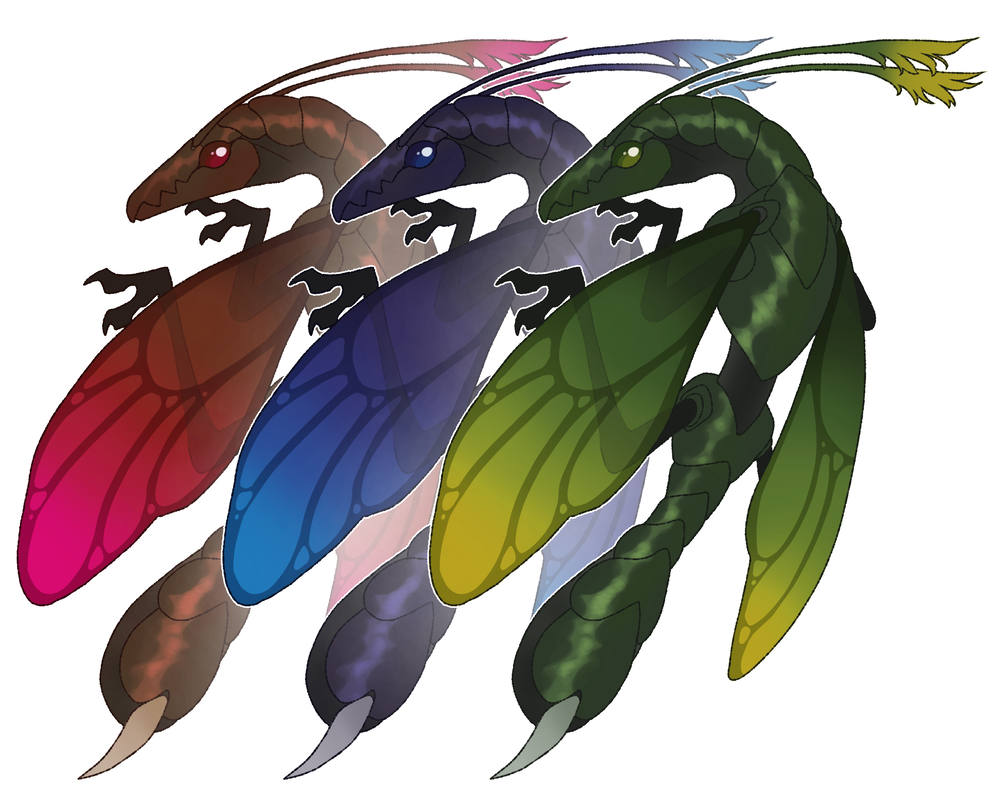 |
Behaviors and TrainingVersantims are not so much domesticated as they have been cohabiting and working with Celesoars. Comparable to what Convergence Species have called "Bees", Versantims only work with Celesoars if they so choose and no way of domesticating has been found. Instead they work with Celesoars as their work together should always benefit both parties, otherwise a Celesoar's Versantim may very well leave them with no warning.Versantims are often used in scavenging and hunting as their sting can cause temporary paralysis in small to medium sized creatures. Celesoars have also often used them for hunting other insectoids as well as keeping more dangerous insects out of homes and villages. As long as a Versantim hive is kept well fed and warm, the Versantims will dutifully protect their providers. | 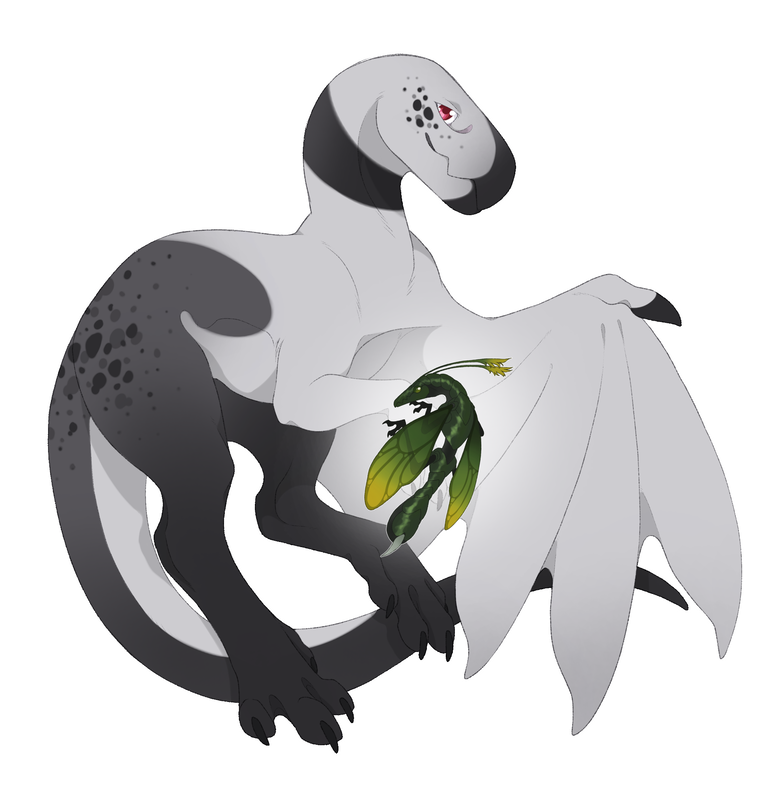 |
Armored Mantibat
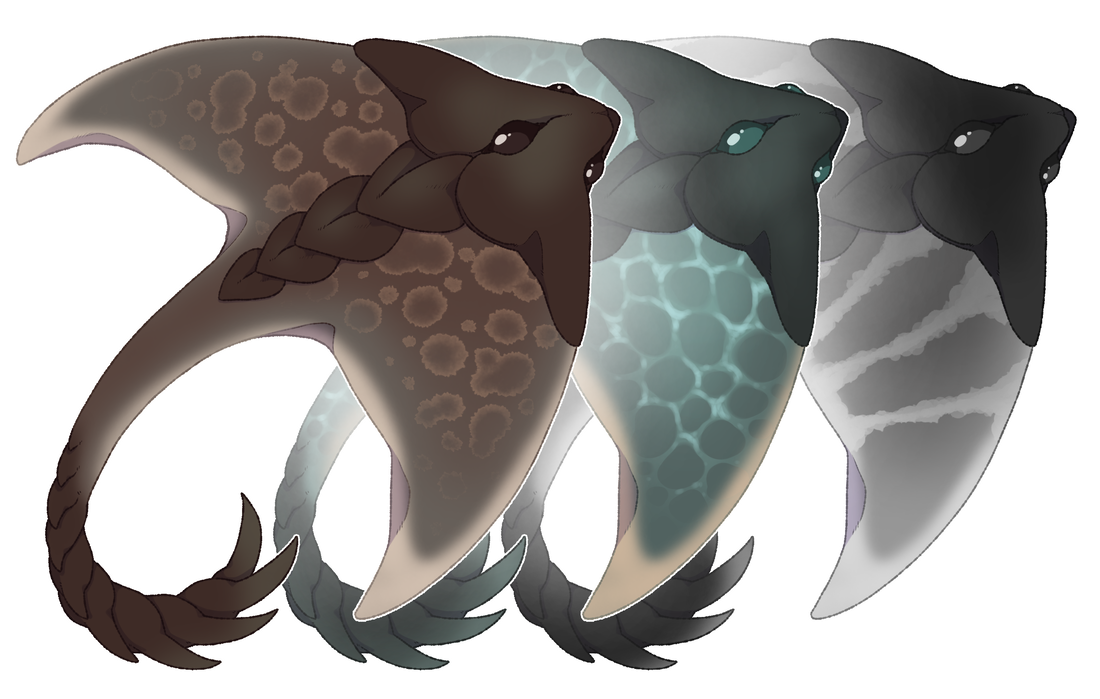 | Size: 4-7 ft Long Weight: 120-250lbs Lifespan: 30-50yrs Region: Grasslands/Swamps/Savannahs - Rivers/Ponds/Lakes Diet: Omnivore Colors: Mantibats come in various shades of brown/blue/grey/sea green but ALWAYS have a pale underbelly and darker scales. They can have spots, wave markings, circles, or stripes.  |
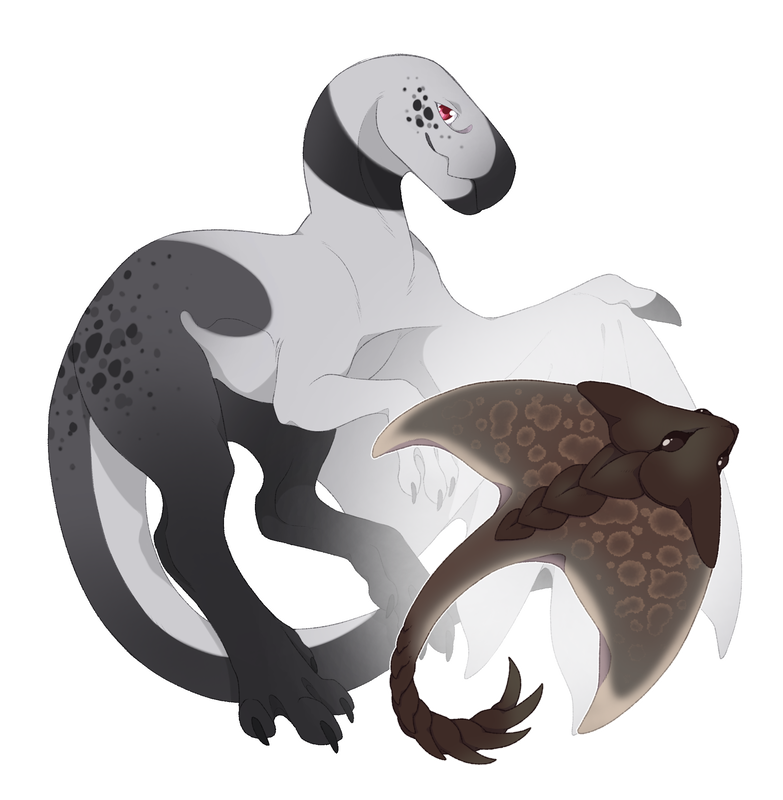 | Behaviors and TrainingMantibats are extremely friendly species that was domesticated by Celesoars a long time ago. They have an average intelligence, enough that they are used to help Celesoars with fishing. They often use their 'wings' to stir up silt and dirt and push fish swarms toward their Celesoar partners.Mantibats have the ability to dart out of the water and glide for small distances as well as be able to breathe outside of water for long periods of times. They have been known to dart off of waterfalls to travel far distances. When on land they will use their 'wings' and tail to push themselves around untill they are able to find a new source of water. These various abilities make them travel friendly for Celesoars and those owning Mantibats will often have 'travel tanks' for their Mantibats. |
Mounts
Mounts for Celesoars generally are used for long journeys, heavy lifting or labor, or trained for serious combat in which they would be able to fight a Celesoar and potentially win.
| Size: 9-13ft Tall Weight: 1,200-2,500 lbs Lifespan: 80-100 yrs Region: Rocky Desert/Forests/Grassland/Savannah/Mountains Diet: Herbivorous Colors: Bosceras come in any color and patterns that your average cow or bison come in. Their boney head and tail plates will ALWAYS be darker than the rest of the body. Horns/Tusks can be Ivory/Tan/Black/Brown but will ALL be the same color. Males will ALWAYS have 3 bright colors on their crest and females only have 2.  | 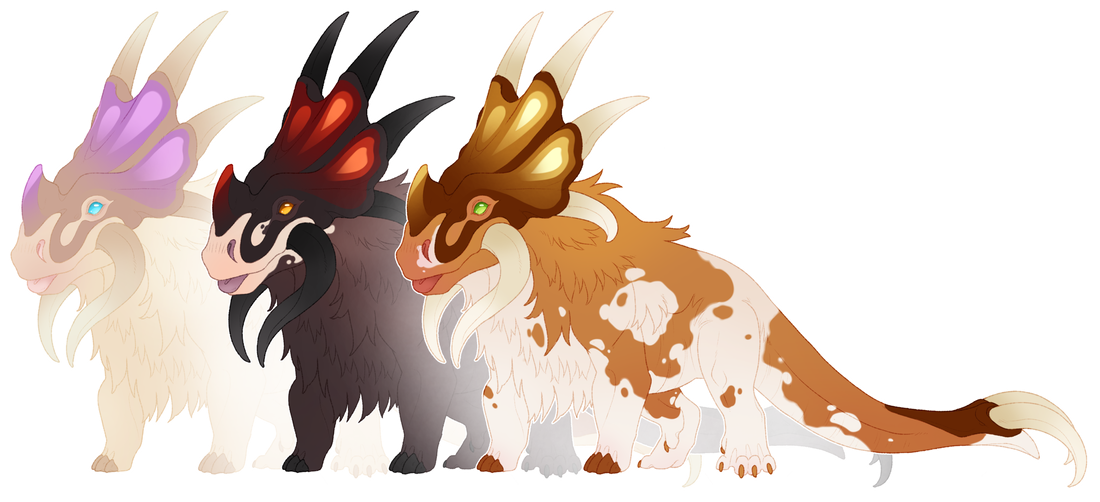 |
Behaviors and TrainingBosceras were fully domesticated by Celesoars long ago but a few wild species can be found within the world of Magirigon. These massive herbivorous creatures tend to roam in large herds and use their tusks and tail spikes to dig into the ground to look for roots and minerals. They eat a variety of greens and have a fondness for fruit.Domesticated Bosceras are usually used in farming and as a food source. Celesoars generally treat them much like cattle. they can be trained to till soil for farming and can sometimes be used as hauling mounts to move heavy loads. They have also been known to be trained to find and dig up large valuable minerals or magic crystals. | 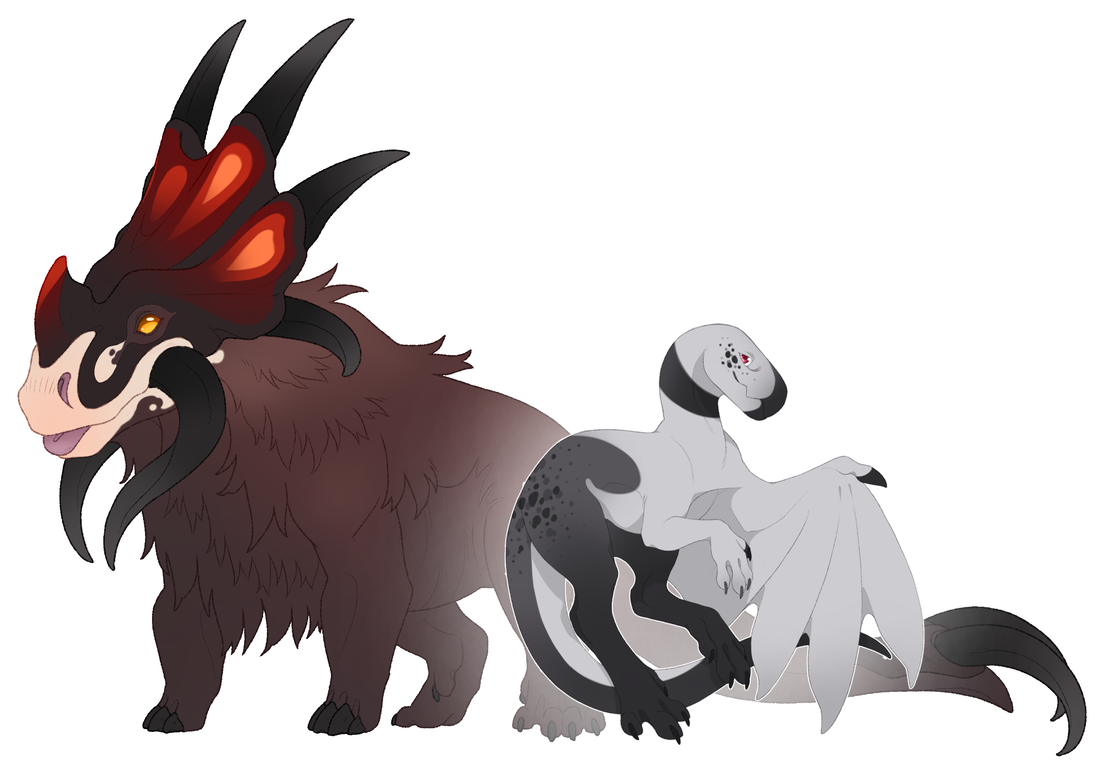 |
Stony Behenamanths
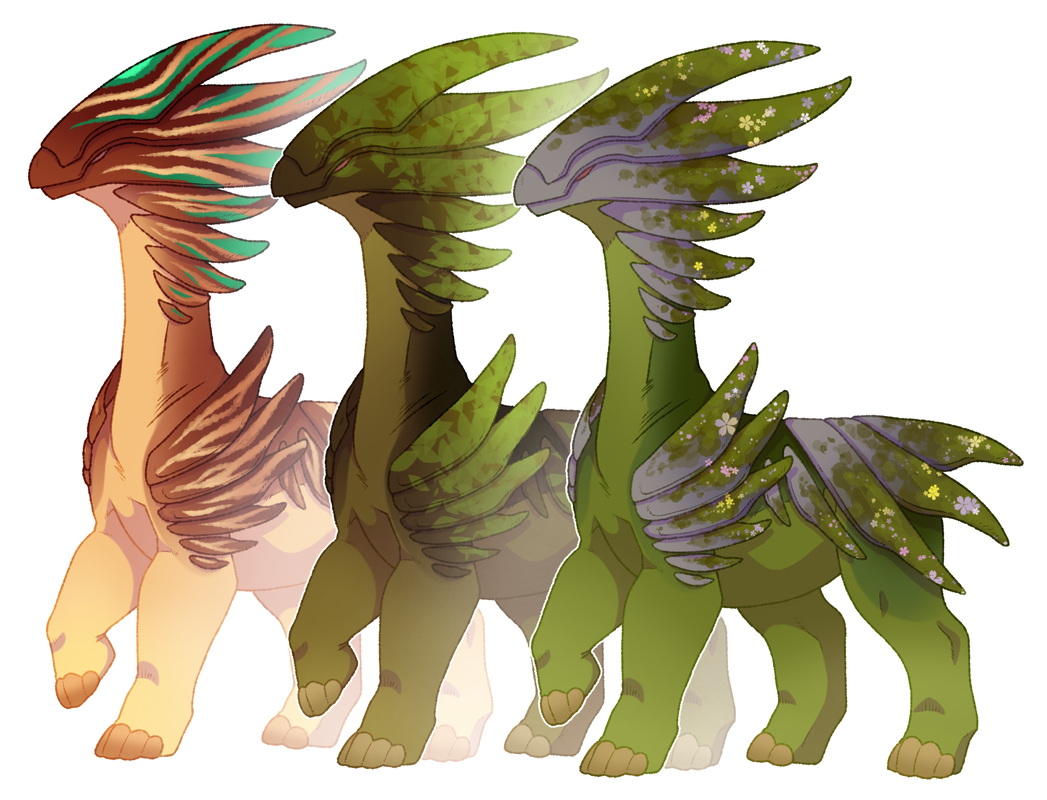 | Size: 20-28ft Tall Weight: 10,000+ lbs Lifespan: 150+ yrs Region: Rocky Desert/Forests/Grassland Diet: Herbivorous/Stone Eaters Colors: Behenamanths have specific colors and marks depending on the region they come from. Desert always come in shades of brown/red/yellow and have stripes on their armor scales. Forest Behenamanths have brown/green bodies with bright green leaf markings on their scales. And finally grasslands Behenamanths have green bodies with grey/brown scales covered in green moss-like markings. Males will have additional markings that are usually bright in color and match the region they come from. 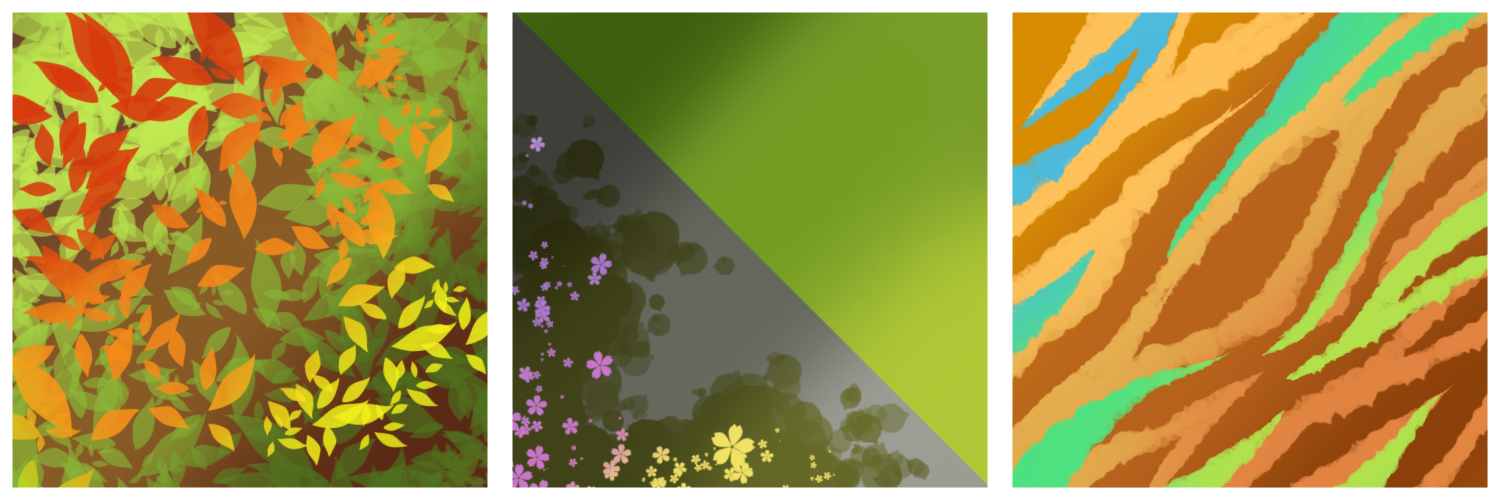 |
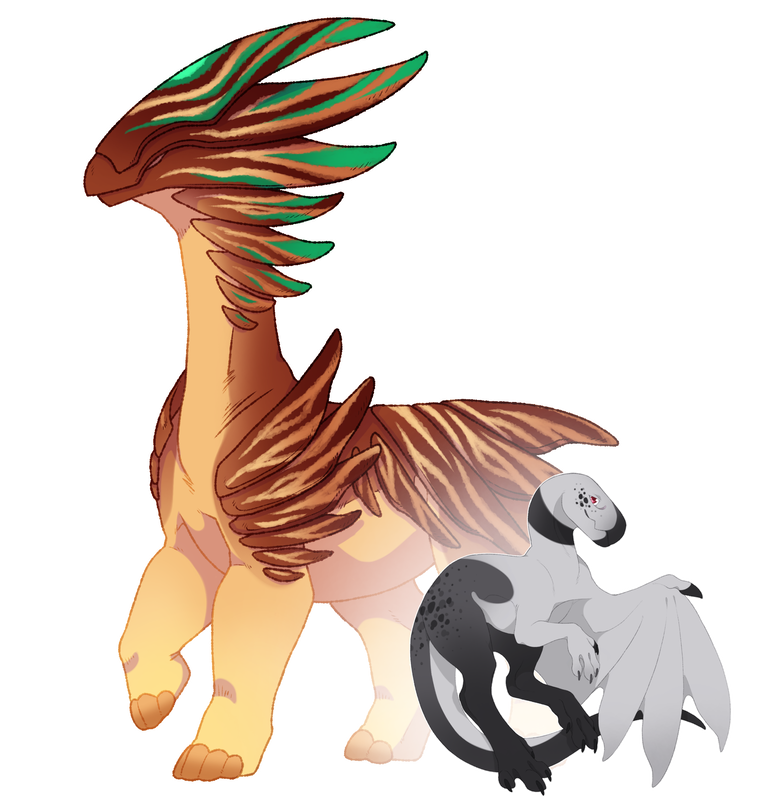 | Behaviors and TrainingBehenamanths are gentle giants and are generally non-aggressive. They are incredibly large beasts that eat various plants, tree bark, rocks, and gemstones. Behenamanths have no eyes and instead use their largest head horn to release sound and their body scales as a sort of echo location to see around themselves. Should you ever feel the ground shake and a low rumble, you know a Behenamanth is nearby!Celesoars tend to use Behenamanths for heavy loads and farming. They make great working companions as long as they are kept well fed, gemstones and magic crystals being some of their favorite foods. They can sometimes be used for regular mounts but are so slow are generally only used when traveling long distances with large Celesoar groups that may have children, elderly, or sick Celesoars; though a custom saddle is usually recommended as their scales make for a rather uncomfortable ride. |